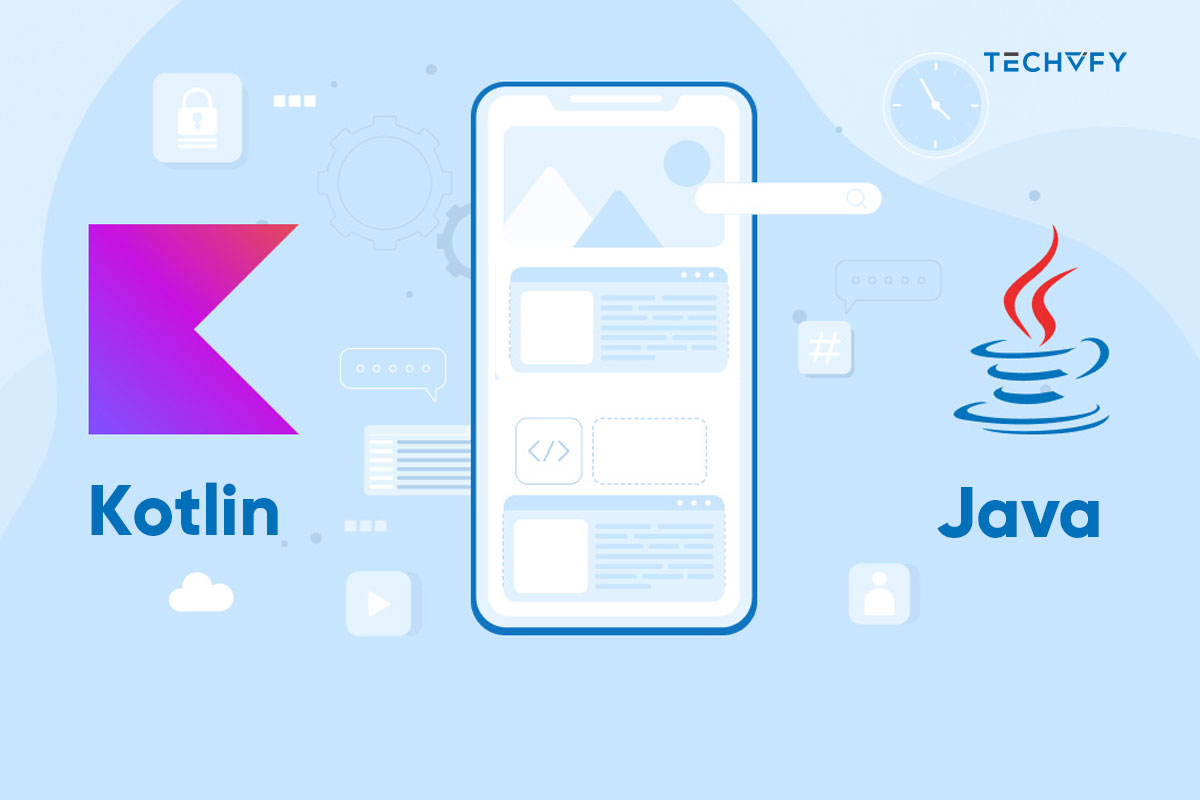Top 7 SDLC Methodologies: What They Are and How to Use Them
- David Ho
- 0 Comments
The SDLC techniques are essential frameworks that direct software development projects from idea to deployment. These structured methods guarantee a structured flow through the development, testing, deployment, and maintenance phases, ensuring the production of top-notch software that fulfills user requirements. This article explores key SDLC methodologies and provides knowledge of the SDLC’s general steps and useful advice on choosing the best methodology.
I. What are SDLC Methodologies?
Software Development Life Cycle (SDLC) methodologies are methods or frameworks that guide the software development, testing, deployment, and maintenance process throughout its lifetime. These approaches offer an organized flow of stages or actions to guarantee the successful development of top-notch software that satisfies user needs. Several SDLC approaches are available, and businesses can select the one that best suits the requirements of their projects.
II. Top 7 Popular SDLC Methodologies
1. Agile
Agile is a flexible software development process that emphasizes customer collaboration and adaptability. It involves providing working software in short, regular cycles and dividing projects into small steps. The Agile methodology promotes ongoing feedback, which enables teams to quickly adapt to shifting requirements and make small changes to the product throughout the development process. Agile emphasizes the importance of cross-functional team collaboration and communication in creating a dynamic, customer-focused development environment.
Agile is a good fit for projects where it’s necessary to make rapid adjustments due to changing or unclear requirements. Its flexibility is also a top option for groups looking to improve teamwork and quickly produce top-notch software.

2. Scrum Framework
With an average length of two to four weeks, Scrum is an Agile framework that organizes work into time-limited phases called sprints. It takes a collaborative approach, with a Development Team building the parts of the product, a Scrum Master leading the process, and a Product Owner determining what’s important. Through activities like Sprint Planning, Daily Scrum, Sprint Review, and Sprint Retrospective, Scrum promotes flexibility, ongoing improvement, and frequent feedback.
Scrum encourages the frequent delivery of important features, making it perfect for projects with changing requirements.
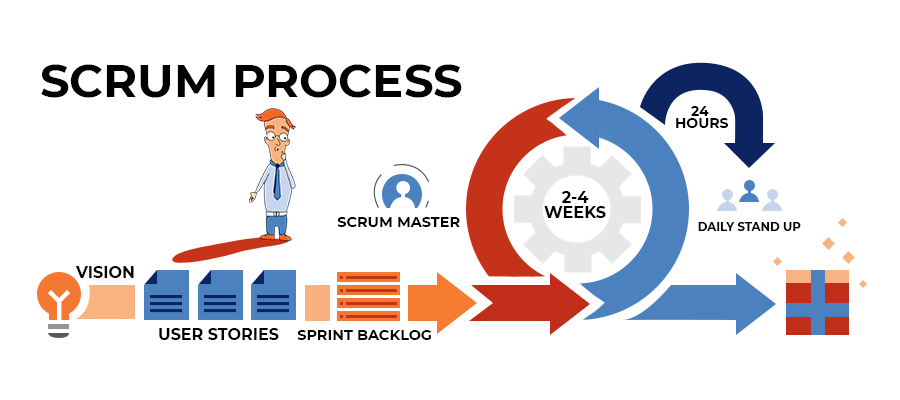
3. Iterative
Iterative is a development approach where projects progress through repeated cycles. The software improves with each update using insights from previous cycles. It allows for continuous improvement and adjustments, incorporating learning as the project evolves. Unlike Agile, Iterative doesn’t recommend any particular collaboration structures, focusing solely on the repetitive refinement process.
It’s effective for software development, providing flexibility, but it needs the comprehensive set of principles and specific roles found in Agile methodologies like Scrum. Iterative approaches are more flexible and easier to apply to different kinds of projects.
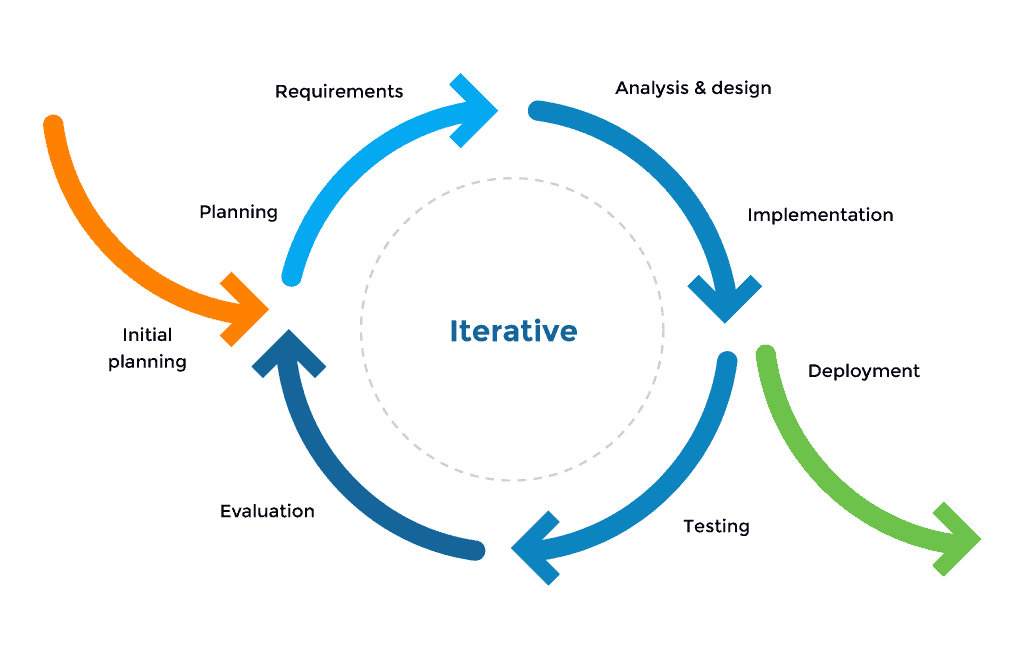
4. Waterfall
Waterfall is a linear and sequential SDLC methodology where each phase, such as requirements, design, coding, testing, and deployment, must be completed before moving to the next. Ensuring a planned flow from start to finish completes every step before moving on.
Waterfall suits projects that define requirements well and remain stable, with minimal expected changes. It’s effective for straightforward and small-scale projects with a clear understanding of the end goal due to its strict and predictable characteristics.
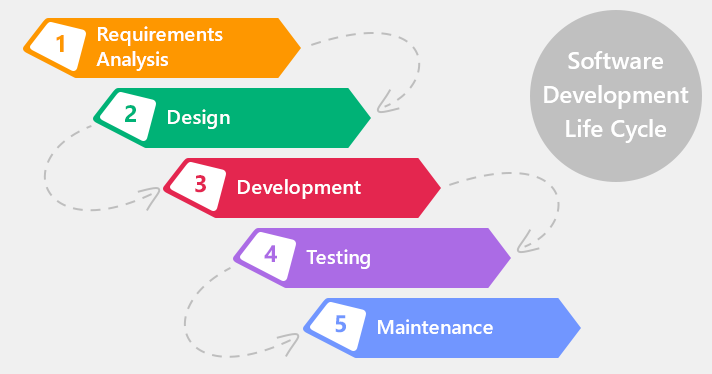
5. Spiral
The Spiral Model is a risk-driven approach combining elements of the Waterfall and Iterative models. It involves cyclic development phases, each representing a spiral, where risk analysis, planning, development, and testing occur. The model emphasizes early risk identification and mitigation by allowing for iterations and feedback loops.
This model works well for complicated, large-scale projects with dynamic needs. The model’s adaptability allows for changing requirements and guarantees careful risk assessment throughout development.
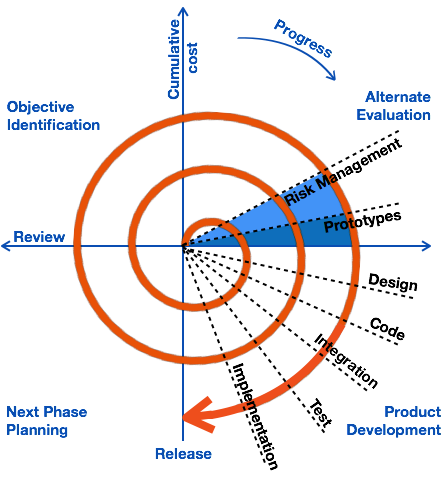
6. Lean
Lean is a production and management philosophy that minimizes waste and maximizes process value. It involves identifying and reducing unnecessary steps, resources, and time to enhance efficiency.
Lean principles are well-suited for projects seeking efficiency improvements and waste reduction. It’s particularly effective in manufacturing, service industries, and software development.
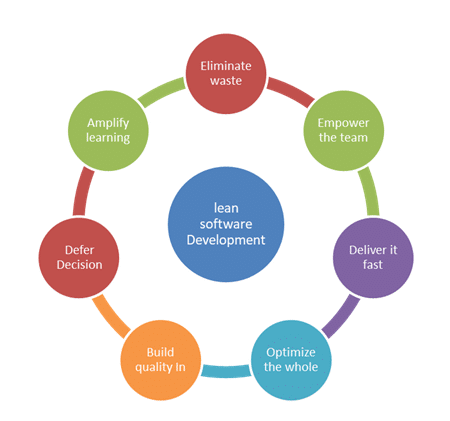
7. DevOps
DevOps is a collaborative and automation-focused method that fills the gap between software development (Dev) and IT operations (Ops). It aims to streamline software delivery by integrating automation tools and practices. Teams adopting DevOps principles emphasize communication, shared responsibility, and a culture of continuous improvement.
DevOps is well-suited for projects requiring rapid and reliable software delivery, frequent updates, and efficient collaboration between development and operations teams. It is particularly effective in environments where continuous integration, continuous delivery (CI/CD), and automation ensure a smooth and responsive software development lifecycle.
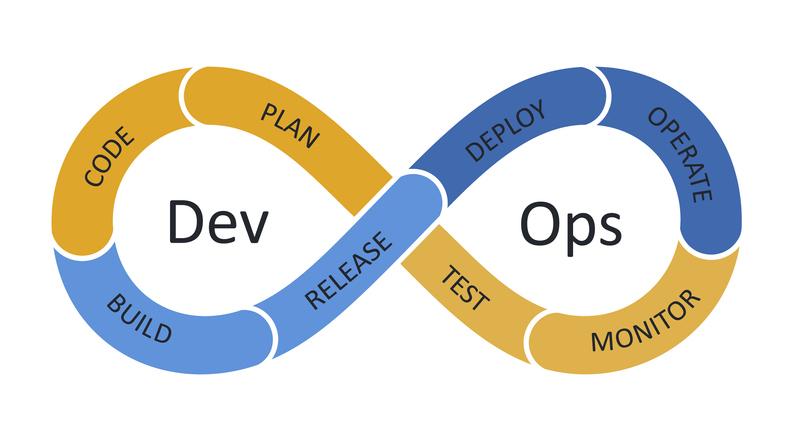
Learn More On:
III. What are the steps in the SDLC Methodology?
While different SDLC models exist, a generic SDLC typically involves the following steps:
Step 1. Planning
The initial step involves defining the project’s scope, objectives, timelines, required resources, and a feasibility study.
Step 2. Feasibility Study
The evaluation assesses the project’s technical, operational, and economic feasibility. This step includes identifying potential risks and challenges during the project’s implementation.
Step 3. Design
The process includes creating a high-level design for the system architecture and specifying hardware & system requirements. Additionally, it involves the development of data models and algorithms.
Step 4. Implementation (Coding)
This stage involves writing the actual code according to the design specifications as intended.
Step 5. Testing
The testing phase encompasses various activities like integration testing, unit testing, system testing, and user acceptance testing. All defects and issues get identified, addressed, and fixed.
Step 6. Deployment
The software is available in the real-world setting, providing essential training and documentation for end-users.
Step 7. Maintenance and Support
The process involves addressing issues that users report, implementing updates, patches, and improvements to the software, and providing ongoing maintenance and support as required.
IV. Tips for Choosing an SDLC Methodology
- Consider Project Goals: Keep your project goals in mind. While all methodologies aim for successful outcomes, different projects may have specific goals.
- Build Team: Assemble a team capable of innovation and problem-solving, adaptable to any SDLC methodology. A strong team is key to delivering a high-quality product.
- Understand Methodologies: Before selecting an SDLC methodology, comprehend the strengths and weaknesses of each. Research and review examples of projects utilizing different methods.
- Evaluate Team Preferences: Create a list outlining how each methodology suits your team’s needs. Assess the unique benefits of each structure to determine the best fit for your organization.
| Methodology | Strengths | Weaknesses | Suitability for |
|---|---|---|---|
| Agile | Flexibility, adaptability | Lack of clear documentation | Evolving requirements. |
| Scrum | Iterative development, collaboration | Rigidity in the face of changes | Frequent feedback and adaptation |
| Waterfall | Sequential, well-defined stages | Limited flexibility during development | Stable and well-understood requirements |
| Spiral | Risk management, iterative | Complex and resource-intensive | High uncertainty and evolving risks |
| Lean | Waste reduction, efficiency | Lack of detailed planning | Efficiency and continuous improvement |
| DevOps | Collaboration, automation | Cultural resistance to change | Focusing on seamless integration and delivery |
Conclusion
SDLC approaches are organized frameworks that direct the entire process. These methods, which include Waterfall, Agile, Scrum, Iterative, Spiral, Lean, and DevOps, provide structured procedures for producing highly qualified software that satisfies user needs. The choice of methodology depends on project goals and team dynamics. Understanding the strengths and weaknesses of each helps teams make informed decisions for successful outcomes.
Do you need a reliable, experienced partner to assist you with your software development projects? If yes, then contact TECHVIFY today. We are a global AI & software consulting and development company that provides customized software solutions to businesses of all sizes. TECHVIFY has completed over 100 projects for clients across various industries, using the latest technologies and best practices of the SDLC methodology. Whether you need custom software or web or mobile app development, get a free consultation from our experts now!
TECHVIFY – Global AI & Software Solution Company
From Startups to Industry Leaders: TECHVIFY prioritizes results, not just deliverables. Accelerate your time to market and see ROI early with high-performing teams, AI (including GenAI) Software Solutions, and ODC (Offshore Development Center) services.
- Email: contact@techvify.com.vn
- Phone: (+84)24.77762.666
FAQs
What are SDLC methodologies?
They are processes and practices software development teams use to navigate the Software Development Life Cycle (SDLC) successfully. The SDLC is a step-by-step process that helps development teams efficiently build the highest quality software at the lowest cost.
Is SDLC a methodology?
No, SDLC is not a specific methodology; rather, it is a framework encompassing various methods. SDLC outlines the stages and processes involved in software development, including planning, analysis, design, implementation, testing, deployment, and maintenance.
How many SDLC methodologies and models are there?
No definitive answer exists regarding how many SDLC methods and models exist, as different sources may classify them differently. However, the most popular SDLC models and methods are Waterfall, Agile, Scrum, Lean, Iterative, Spiral, and DevOps.




